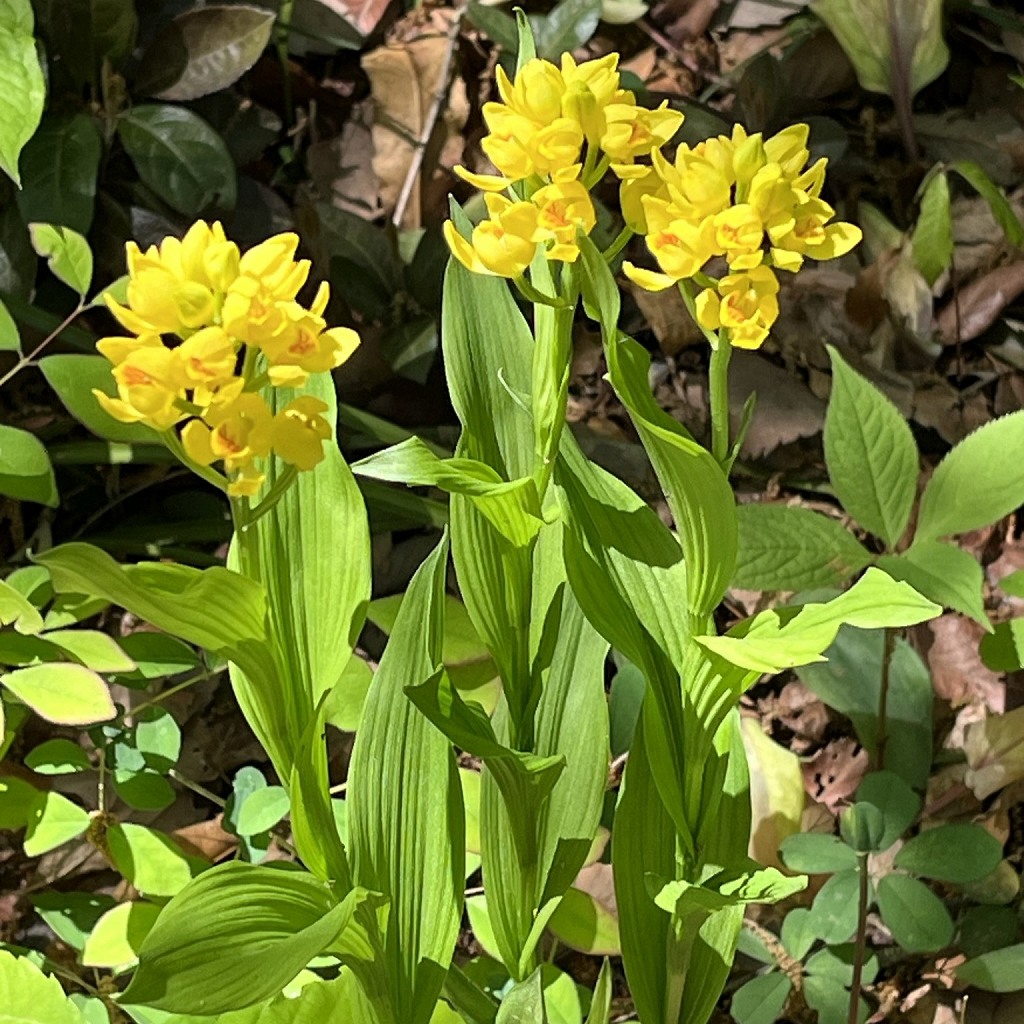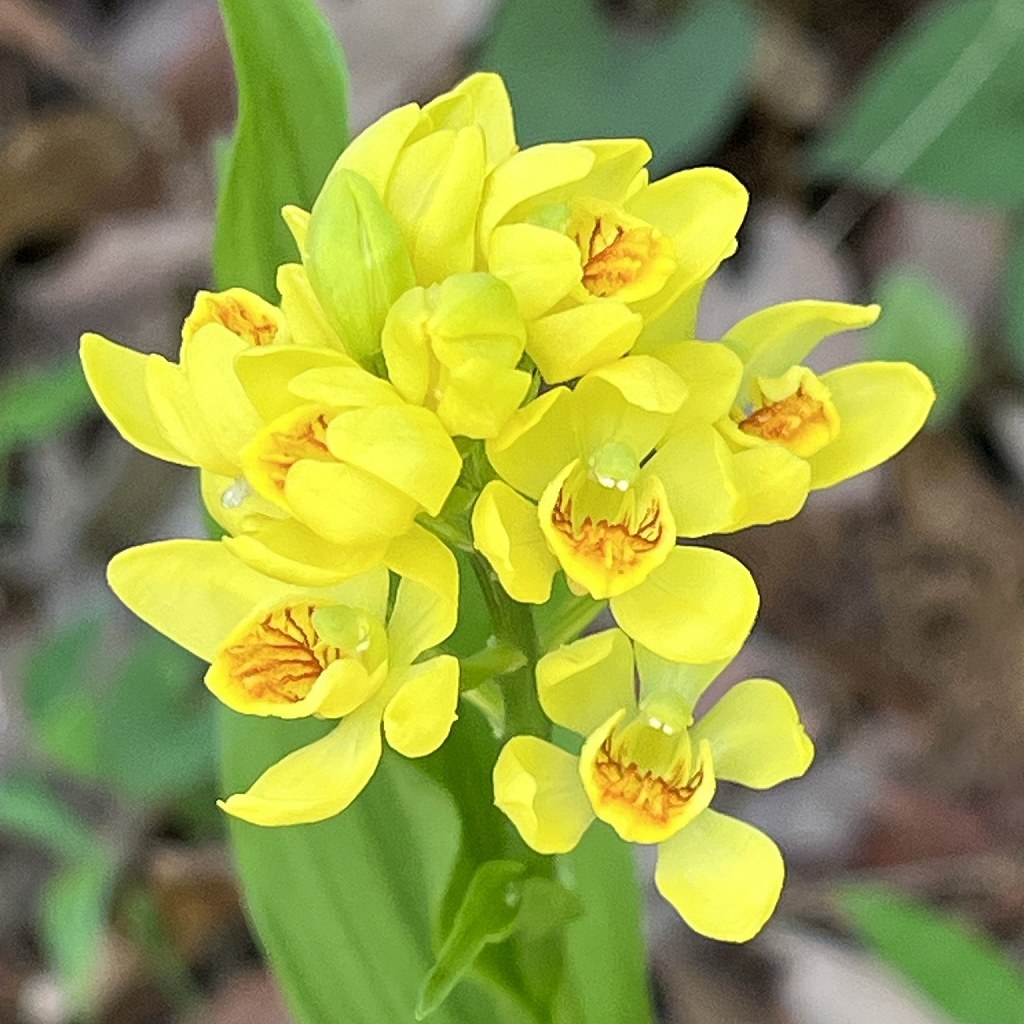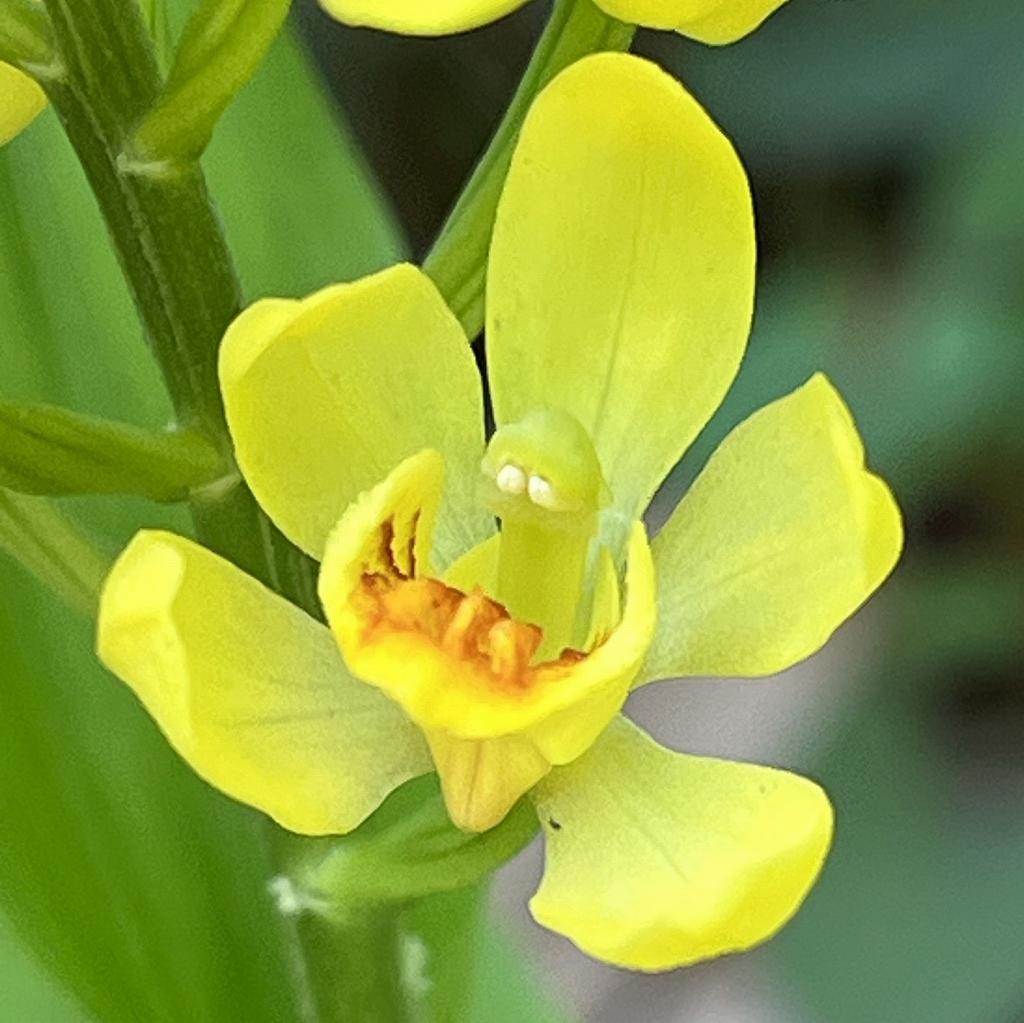キンランの花は小さく、上向きに半開し、下から順に咲き上がります。昔はありふれた地生蘭でしたが、今は各地で保全が進められています。
Golden Orchid flowers are small, half-open upward, and bloom from the bottom up. It used to be a common terrestrial orchid, but now it is being conserved in various places.
【仮名】キンラン
【和名】金蘭
【英名】Golden Orchid
【学名】Cephalanthera falcata
【誕生】05/ 09
【開花】04, 05月
【花色】Yellow



キンラン
キンランの概要
キンランはラン科の多年草です。日本では本州から四国、九州まで、国外では朝鮮半島、中国に分布。昔はありふれた地生蘭でしたが、樹木と菌根菌の共生関係に依存して生育するため、経済林の拡大や里山の荒廃など、森林環境の変化で衰退し、今は各地で保全が進められています。
キンランの名前
キンランの名前の由来は花が黄色の蘭だから。昔は同じような森林環境で白色の花を咲かせる近縁種「銀蘭」とともに並んで咲いていました。ラテン語の属名セファランテラは「蕊柱頭部の大きな葯」という意味。種小名ファルカタは「鎌状の」という意味で花被の形状に由来します。
キンランの姿形
キンランの茎は枝分かれせずに直立します。葉は楕円状の披針形で柄がなく、茎を抱きながら互生。花は小さく上向きに半開し、下から順に咲き上がります。花被は上萼片、左右の側花弁と側萼片、唇弁で、真ん中に蕊柱、花粉塊が2つ。花後の朔果は熟すと裂けて種子を散らします。
キンランの生態
キンランは樹木と菌根菌の共生関係に大きく依存しています。菌根菌は樹木に土壌中の窒素やリンなどの養分や水分を供給し、樹木を病原菌や有毒物質から守る一方、樹木は菌根菌にエネルギー源の単糖類を供給。キンランはその共生関係に割り込み、養水分と単糖類を受け取ります。
キンランの近縁
キンランの近縁「銀蘭」は草丈が少し小さく、白色の花を咲かせます。ラテン語の種小名エレクタは「直立した」という意味。かつては金蘭とともに並んで咲いている姿が各地で見られましたが、金蘭より菌根への依存度が高いため、森林環境の変化で衰退し、見られなくなりました。
Golden Orchid
Golden Orchid is a perennial herb of Orchidaceae family. In Japan, it is distributed from Honshu to Shikoku and Kyushu, and outside of Japan, it is distributed in the Korean Peninsula and China. It used to be a common terrestrial orchid, but because it grows dependent on the symbiotic relationship between trees and mycorrhizal fungi, it has declined due to changes in the forest environment, such as the expansion of economic forests and the devastation of satoyama. Therefore, conservation efforts are now underway in various places.
Golden Orchid gets its name from the yellow flower. The Japanese name for Cephalanthera erecta, a related species that blooms white flowers in a similar forest environment, is “Silver Orchid”. In the past, Golden Orchid and Silver Orchid bloomed side by side. The Latin genus name Cephalanthera means “large anther on the stigma”. The species name Falcata means “sickle-shaped” and is derived from the shape of the perianth.
Golden Orchid stem stands upright without branching. The leaves are elliptical lanceolate, without stalks, and alternate while hugging the stem. The flowers are small and half-open upward, and bloom from the bottom up. The perianth consists of upper sepals, left and right side petals, side sepals, and lip petals. After flowering, the pods split open and scatter the seeds when ripe.
Golden Orchid relies heavily on a symbiotic relationship between trees and mycorrhizal fungi. Mycorrhizal fungi supply trees with nutrients such as nitrogen and phosphorus in the soil, and protect them from pathogenic bacteria and toxic substances, and trees supply mycorrhizal fungi with monosaccharides as an energy source. Golden Orchid intervenes in that symbiotic relationship and receives nutrients and monosaccharides.
Golden Orchid’s relative “Cephalanthera erecta” has a slightly shorter plant height and blooms white flowers. The Latin specific epithet Erecta means “upright”. In the past, it could be seen blooming side by side with Golden Orchid in various places, but because it depends more on mycorrhiza than Golden Orchid, it has declined due to changes in the forest environment and can no longer be seen.


